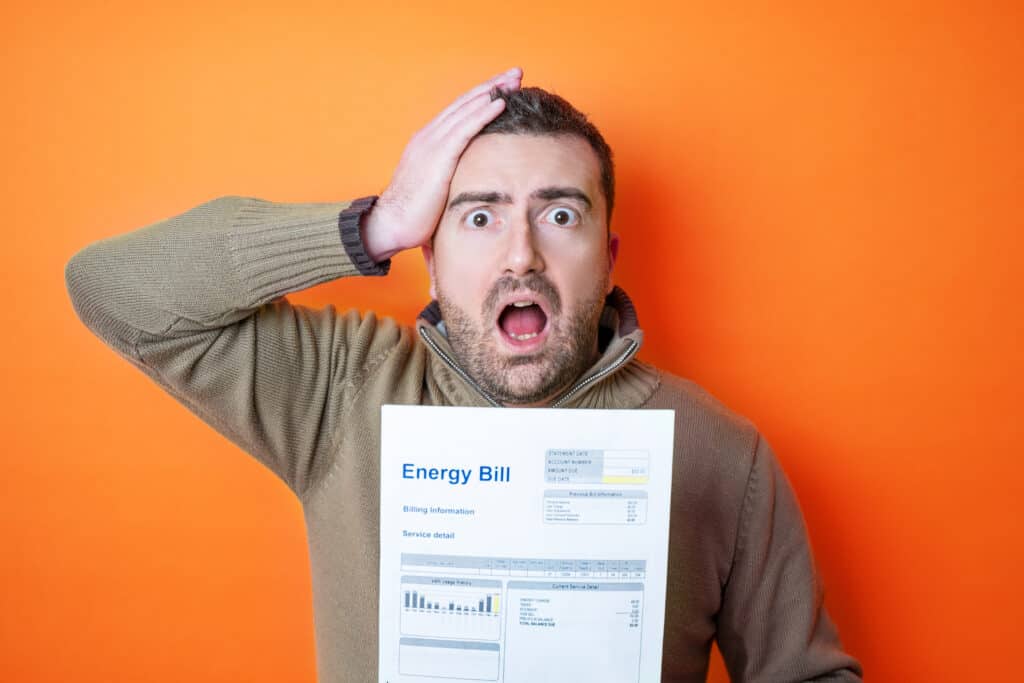Any product or company names, marks, or logos shown on this page are the property of their respective owners. Compare Power is an unaffiliated, independent marketplace. Get unbiased, accurate information backed by our commitment to editorial integrity.
Green Energy Providers, Plans & Rates
Renewable energy sources like wind and solar are becoming more efficient and cost-effective.
Texans now have more affordable options due to increasing demand and incentives.
This guide helps you identify the top renewable energy providers, plans, and rates to make an informed decision for your home.
Need green renewable energy for your business? Get an instant quote here.
Compare Green Energy Rates
Compare today’s lowest eco-friendly, green energy rates for common household consumption patterns.
Green Energy Rates by Provider
Compare green, renewable Texas electricity rates from different electric providers.
These live rates for ONCOR ELECTRIC DELIVERY COMPANY service area were updated on . Pricing shown is based on an exact usage of 1000 kWh.
Renewable Energy Incentives
There are several incentives for choosing renewable energy in Texas. These incentives are designed to encourage consumers to adopt greener energy sources.
- Federal Tax Credit: The federal government offers a tax credit for installing renewable energy systems like solar panels on residential properties. This incentive helps reduce the overall installation cost, making solar power more accessible for homeowners.
- State Rebates and Incentives: Some local utility companies and municipalities offer rebates and incentives for installing renewable energy systems. These programs can help offset the upfront costs of transitioning to cleaner energy sources.
- Net Metering: In some areas, net metering allows homeowners with solar panels to sell excess energy back to the grid. This helps offset the cost of electricity consumed when solar generation is low or unavailable. Contact Reliant at (855) 887-2194 or Green Mountain Energy at (844) 854-2257 to set up the right solar plan for you.
Best Green Energy Providers
Many Texas retail electric providers (REPs) offer green renewable energy plans that source some or all of their electricity from renewable sources.
By choosing a renewable energy plan, you support the growth of renewable energy and contribute to a cleaner environment.
These companies are among the most influential and active in adding renewable energy to Texas’ energy mix.
Click on any of the following providers to view energy plans and rates or to learn more.
How to Compare Green Energy Plans
Compare providers’ prices, terms, and features to find the best eco-friendly energy deal.
- Determine your energy needs: If switching electricity companies, review your past electricity bills to understand your average monthly usage. This will help you identify plans that best meet your consumption patterns. If you’re moving to a new home and don’t have any usage history, use this kWh calculator to estimate your average monthly usage, which will help you narrow down your plan options.
- Compare rates and terms: Compare the cost per kilowatt-hour (kWh) and contract term for different plans. Look for competitive rates and consider whether a fixed-rate or variable-rate plan is better suited for your needs.
- Examine additional fees: Check for other fees, such as early termination fees or minimum usage charges, which could affect the overall cost of your electric bill.
- Research the provider: Look into the company’s reputation, customer service, and commitment to renewable energy. Reviews and ratings from other customers can provide valuable insight.
- Read the Electricity Facts Label (EFL): The EFL is a document that outlines essential information about a plan, including the percentage of renewable energy used, contract terms, and additional fees. Make sure to read and understand the EFL before committing to a plan.
Start with your zip code on this page and select “Help Me Choose” to get started.
Select Show 100% green energy plans. This will filter out any energy plans that are not renewable.
Pro tip: If the home isn’t new, you may be able to get information about its kWh usage history from the previous owner.
If that is the case, you can use the historical usage calculator to determine the best plan for your home.
See how it works: Learn how to shop with your kWh usage in 2 minutes ⤵️
Shopping Considerations
- Contract term: Typical energy contracts in Texas run for 3, 6, 12, 24, and 36 months. It’s important to watch for odd-term contracts during winter and spring, as these may offer great value initially but could shift your renewal month to a time when rates are higher.
- Lease length (apartments): Early termination fees do not apply when moving out in Texas, so you don’t need to match your lease length to your electricity plan’s term if moving into an apartment.
- Plan types: Fixed-rate plans are popular for their predictability and ease of budgeting. Retail electric providers (REPs) also offer variable rate, index, prepaid, and time-of-use energy plans or free nights and weekends electricity.
Benefits of Going Green
Embracing 100% renewable energy in Texas helps you dramatically reduce your carbon footprint and contributes to the state’s ongoing efforts to invest in eco-friendly power sources.
In 2020, Texas generated over one-fifth of its utility-scale power from renewable sources, accounting for one-fifth of the nation’s nonhydroelectric renewable energy.
The Lone Star State has taken huge leaps in diminishing its carbon footprint by heavily investing in wind and solar power.
Texas now leads the United States in electricity production from wind.
The environmental benefits of renewable energy in Texas are astounding. In 2017 alone, Dr. Joshua Rhodes from the University of Texas reported that renewables in the state:
- Saved 22 billion gallons of water,
- Decreased sulfur dioxide pollution, potentially reducing healthcare costs by $33 billion, and
- They prevented 52 million tons of heat-trapping carbon dioxide from entering the atmosphere.
While Texas is also a global oil-and-gas powerhouse, ranking third in crude oil production and second in natural gas production, its commitment to renewable energy continues to grow.
As of 2020, Texas fell just outside the top 10 states for electricity generated from advanced clean energy sources like wind and solar.
However, developers have ambitious plans filed with ERCOT, Texas’ primary electric grid operator, to triple solar capacity and add as much wind energy as has been installed in the last five years combined.
This progress is supported by the state’s renewable energy mandate rules, first adopted in 1999 and amended in 2005, which called for 10,000 megawatts of renewable energy by 2025, including 500 megawatts from non-wind sources.
In 2009, Texas surpassed its 2025 goal, primarily due to wind farms. By 2020, the state boasted over 6,000 megawatts of renewable energy capacity from sources other than wind.
With more than 13,000 wind turbines and 24.2 gigawatts (GW) of installed capacity, Texas has the nation’s highest number of wind turbines and installed capacity, ranking second in wind power production, just after Iowa.
As of 2020, wind-powered electricity in Texas accounts for nearly one-third of the U.S. total.
Although Texas leads the nation in wind power capacity, it ranks 11th in renewables, with 21.9% of its electricity coming from renewable sources.
As the state continues to invest in renewable energy, Texans can take pride in contributing to a greener future by choosing eco-friendly energy plans for their homes.
Clean Renewable Energy
Clean, renewable energy benefits the environment and holds significant economic advantages.
We can enjoy a healthier and more sustainable future by switching to renewable energy sources.
Environmental Benefits
- Preserving a Healthy Environment: Clean, renewable energy generation reduces air, water, and soil pollution, contributing to a healthier ecosystem for plants, animals, and humans.
- Sustainable Resource Use: Renewable energy sources, such as solar, wind, and hydro, are abundant and inexhaustible, ensuring a long-term and reliable energy supply.
- Minimal Land Impact: Renewable energy installations often impact land use less than traditional energy sources like fossil fuels, reducing habitat destruction and deforestation.
- Water Conservation: Renewable energy sources like solar and wind require minimal water consumption during operation, preserving our precious water resources.
- Reduced Emissions: Clean, renewable energy sources emit little to no harmful pollutants, such as carbon dioxide (CO2), mercury, nitrogen oxides (NOx), sulfur dioxide (SO2), or particulate matter, into the air, water, or soil. This leads to improved air quality, reduced acid rain, and a decreased greenhouse effect, ultimately combating climate change.
Economic Value of Renewable Energy
As the cost of solar and wind power become more competitive, Texas emerges as a renewable energy leader, attracting technology-driven industries like data centers.
With renewables playing a significant role in Texas’ energy portfolio, the economic benefits are becoming apparent.
Renewable energy development contributed nearly $1 billion to the state’s economy last year, with $1.5 billion in total output and over 10,225 permanent jobs.
Six ways renewables bring economic value to Texas:
- Boosting Local Government Revenue: Renewables, a capital-intensive industry, paid substantial property taxes, totaling $210.4 million in local government revenue last year.
- Supporting Landowners: In 2017, landowners hosting wind and solar projects received an estimated $90.4 million in lease payments.
- Lowering Energy Costs: Between 2010 and 2017, customers in the ERCOT region saved $5.7 billion in electricity costs due to the presence of renewables, including $855.9 million in 2017 alone.
- Creating Well-Paying Jobs: With 33,000 jobs in the renewable energy industry, Texas has seen a threefold growth since 2013, accounting for at least $2 billion in annual wages.
- Stimulating Economic Development: Texas’ renewable energy leadership attracts corporate and industrial customers seeking access to low-cost, predictable renewable energy, fostering economic growth.
- Improving Human Health and the Environment: Alongside economic benefits, renewable energy offers significant environmental advantages, yielding between $0.8 and $2.4 billion annually in environmental savings.
In short, renewable energy benefits Texas’s individuals, companies, communities, and governments.
As demand for clean energy grows, Texas’ strong renewables sector ensures its continued global energy leadership.
Renewable Energy Certificates
While it’s impossible to direct specific electrons from renewable sources like wind farms to your home, you can still choose to get your electricity from clean, renewable sources instead of polluting ones like coal and oil. This is where renewable energy certificates (RECs) come in.
RECs, also known as green certificates or renewable energy credits, represent the environmental benefits of renewable power generation. Defined as one-megawatt-hour units of power generated by sources like wind, solar, hydro, and biomass, RECs can be traded independently of the electricity they produce.
By purchasing RECs, energy companies balance out the clean energy they buy for their customers, ensuring the electricity they use comes from renewable sources. This reduces the reliance on fossil fuels and helps lower CO2 emissions associated with electricity consumption.
So, when you choose an electricity plan that includes RECs, you support developing and operating more renewable energy sources. As a result, more clean energy is added to the grid, and fossil fuel energy consumption is reduced, helping to create a cleaner and greener planet.
Green Renewable Energy Sources
Renewable energy sources can generate electricity without depleting natural resources. Harnessing different types of green energy, such as the power of wind, sun, water, and geothermal heat, not only provides clean, pollution-free electricity but also helps combat climate change.
Unlike traditional energy sources like fossil fuels, coal, and natural gas, renewables offer sustainable energy with zero CO2 emissions.
Some popular green energy sources include wind power, solar power, hydropower, geothermal power, biomass, and biofuels, each with unique advantages and disadvantages.
Wind Power: Wind turbines capture the wind’s kinetic energy, spinning large blades connected to generators and electrical lines, turning air currents into electricity.
Solar Power: Solar panels use photovoltaic cells to convert sunlight into direct current electricity. As solar energy costs continue to decrease, experts predict a significant increase in global photovoltaic capacity by 2050.
Geothermal Power: Geothermal energy taps into the Earth’s natural heat to generate electricity. While it’s quick and easy to develop, it may not be as reliable as other renewable energy forms.
Biomass: Biomass energy is derived from organic materials, including agricultural waste products, plants, food waste, and sewage sludge. Anaerobic digestion produces greenhouse gas-free biogas, while landfill methane comes from decomposing garbage.
Waste Power: Industrial companies generate waste power by burning off excess energy. Though sustainable, burning waste can lead to air and soil pollution.
Thermo-electric Power: Thermal energy converts heat into mechanical work. A temperature difference between two objects creates a voltage difference across a circuit, producing electricity.
Nuclear Power: Nuclear power generates electricity through nuclear reactions in reactors containing fissile materials like uranium, plutonium, thorium, or enriched uranium. A nuclear power plant can run continuously once started, providing a constant energy supply.
Hydropower: Hydropower transforms river flow into rotational kinetic energy using a water wheel. Hydroelectric power plants, such as the Hoover Dam, use the force of flowing water to generate electricity.
Ocean Currents: Massive ocean currents like the Gulf Stream and the Kuroshio Current carry warm saltwater along the ocean floor, regulating climate and providing a steady energy source.
Wave Energy: Waves transfer energy powerfully, spinning large propellers called wave motors to generate electricity.
By embracing these green renewable energy sources, we can build a cleaner, more sustainable future for future generations.
Renewable Energy FAQs
Will a renewable green energy plan cost me more?
Although renewable energy has often been more expensive than fossil fuels, rising demand and tax incentives make green energy increasingly affordable for many Texans. The key to finding a cost-effective green energy plan is to shop based on your home’s annual usage profile.
By exploring 100% Green Renewable Energy plans on ComparePower, you can find the perfect fit for your home by considering your energy consumption habits. Selecting an energy plan that aligns with your home’s energy usage will save you time and money and help you shrink your carbon footprint.
Who is the cheapest green energy provider?
Identifying the most budget-friendly green energy supplier and plan depends on your specific energy consumption. Every household is different. Utilize ComparePower to swiftly discover an environmentally friendly energy plan customized to your home’s energy requirements, allowing you to save money and make a sustainable choice.
What is the cheapest green energy plan in Texas?
When people talk about finding the best electric rate or plan, they usually mean securing the best rate per kWh. To find the ideal renewable green renewable energy provider, shop for plans that match your household’s unique energy usage profile. By comparing energy plans based on your home’s consumption, you can avoid gimmicks and focus on the most suitable options.
Using ComparePower, you can quickly discover the most cost-effective green renewable energy plan tailored to your home usage profile in just 5 minutes.
Call us at 855-441-3030 Monday through Friday, 8:30 a.m. to 6:30 p.m., or Saturday, 9:00 a.m. to 4:30 p.m.









